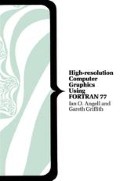Abstract
By now you should be aware that there are many different types of hidden line and/or surface algorithm (Sutherland et al., 1974). One variety involves a rectangular array representing the totality of pixels on the screen. We imagine rays of light entering the eye through each of the pixels on the screen. These rays naturally pass through objects in our scene and we can note the co-ordinates of these points of intersection. The array will hold the ‘z co-ordinate’ (initially minus infinity) of the nearest point of intersection. So we build up a picture by adding new objects, finding where the rays cut the object, and changing the array values (and the pixel colour on the screen) whenever the latest point of intersection is nearer the eye than the corresponding value stored in the array. This technique is very useful if we wish to shade-in areas in subtly differing tones of a given colour (chapter 15). It does, however, have enormous storage requirements and needs a very powerful computer. In this chapter we give another type of general algorithm more suitable for use with small computer systems and raster-scan display devices, which works on the ‘back-to-front’ principle mentioned earlier.
Preview
Unable to display preview. Download preview PDF.
Author information
Authors and Affiliations
Copyright information
© 1987 Ian O. Angell and Gareth Griffith
About this chapter
Cite this chapter
Angell, I.O., Griffith, G. (1987). A More General Hidden Surface Algorithm. In: High-resolution Computer Graphics Using FORTRAN 77. Macmillan Computer Science Series. Palgrave, London. https://doi.org/10.1007/978-1-349-18644-0_13
Download citation
DOI: https://doi.org/10.1007/978-1-349-18644-0_13
Publisher Name: Palgrave, London
Print ISBN: 978-0-333-40399-0
Online ISBN: 978-1-349-18644-0
eBook Packages: Computer ScienceComputer Science (R0)

